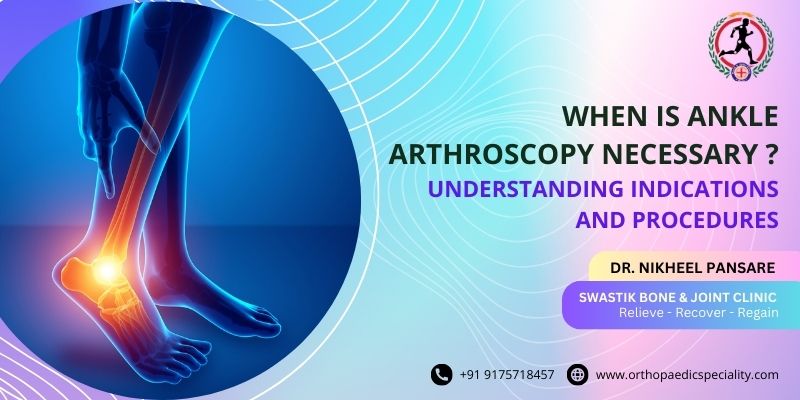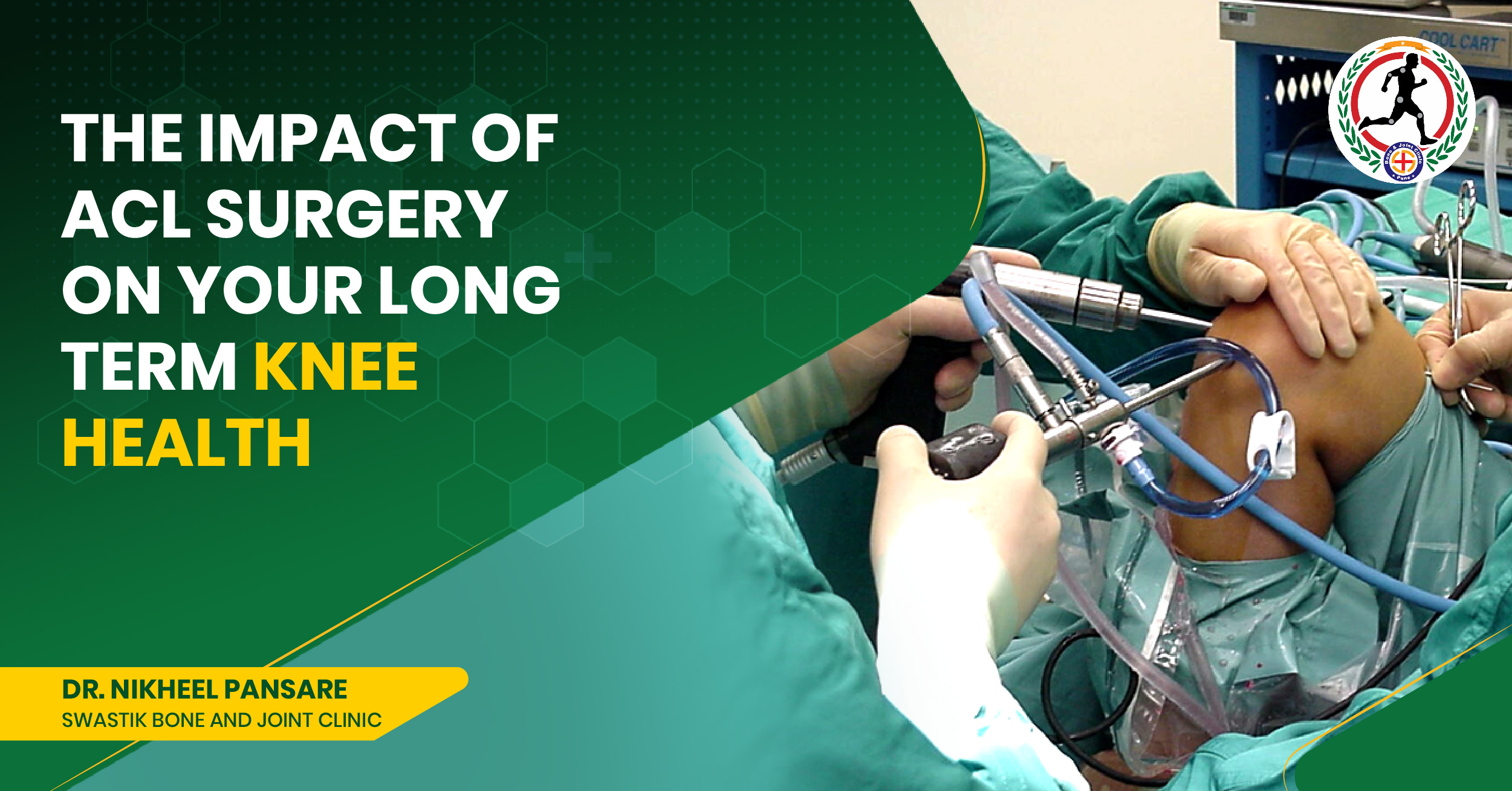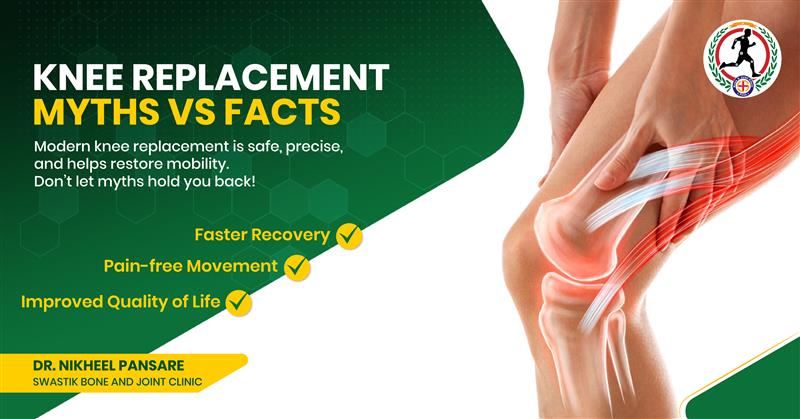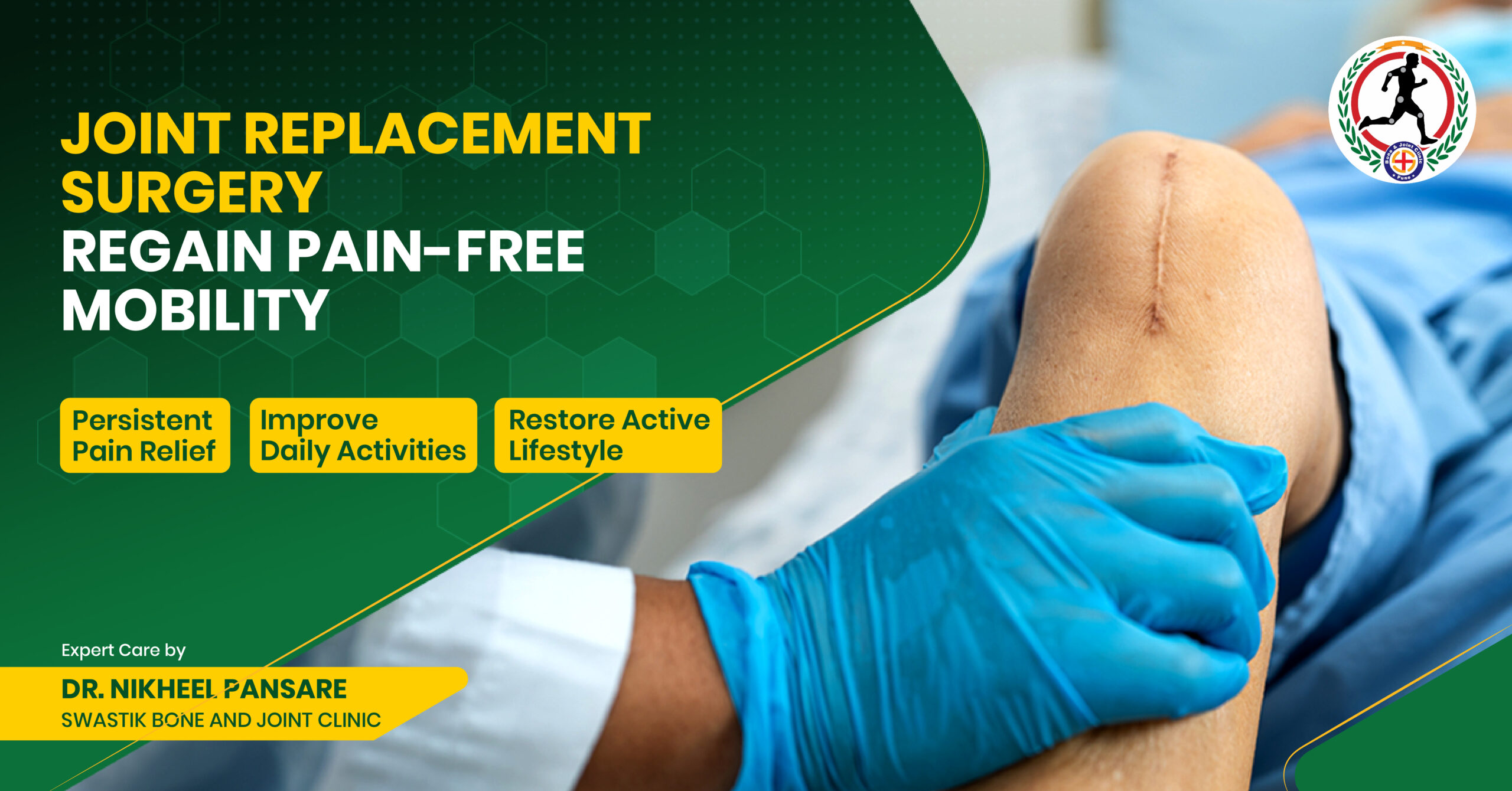Ankle arthroscopy is a minimally invasive surgical procedure used to diagnose and treat various conditions affecting the ankle joint. Led by esteemed orthopedic specialist Dr. Nikheel Pansare, Swastik Bone and Joint Clinic in Viman Nagar offers comprehensive ankle arthroscopy services. Let’s delve into the indications for ankle arthroscopy and the steps involved in the procedure.
1. Indications for Ankle Arthroscopy:
Ankle arthroscopy may be necessary to diagnose and treat a range of ankle conditions, including:
a. Ankle Impingement Syndrome: A condition characterized by abnormal bony growths or soft tissue inflammation within the ankle joint.
b. Ligament Tears: Injuries to the ligaments supporting the ankle joint, such as the anterior talofibular ligament (ATFL) or calcaneofibular ligament (CFL).
c. Cartilage Damage: Degeneration or injury to the articular cartilage lining the surfaces of the ankle joint.
d. Loose Bodies: Small fragments of bone or cartilage that may become trapped within the ankle joint, causing pain and limited mobility.
e. Synovitis: Inflammation of the synovial lining of the ankle joint, often associated with conditions like rheumatoid arthritis or gout.
f. Osteochondral Lesions: Defects in the cartilage and underlying bone of the ankle joint, which may result from trauma or repetitive stress.
2. Procedure Overview:
a. Preparation: Before the procedure, you will undergo a thorough evaluation, including imaging studies like X-rays or MRI scans to assess the condition of your ankle joint. Your orthopedic surgeon will discuss the procedure, potential risks, and expected outcomes with you.
b. Anesthesia: Ankle arthroscopy is typically performed under regional anesthesia, supplemented with sedation to keep you comfortable during the procedure.
c. Arthroscopic Access: Small incisions, known as portals, are made around the ankle joint to insert the arthroscope and specialized surgical instruments.
d. Visualization: The arthroscope, a thin, tube equipped with a camera and light source, is inserted through one of the portals to provide a clear view of the inside of the ankle joint.
e. Treatment: Once the joint is visualized, your surgeon can address any identified abnormalities, such as removing loose bodies, repairing ligament tears, or smoothing out damaged cartilage.
f. Closure: After completing the necessary repairs or procedures, the incisions are closed with sutures or adhesive strips, and a sterile dressing is applied to the ankle.
3. Recovery and Rehabilitation:
Following ankle arthroscopy, you will be monitored in the recovery area until the effects of anesthesia wear off. Depending on the extent of the procedure, you may be able to return home the same day with instructions for post-operative care.
a. Pain Management: Your surgeon may prescribe pain medications or recommend over-the-counter options to manage discomfort during the initial recovery period.
b. Physical Therapy: Rehabilitation exercises and physical therapy are essential components of the recovery process. Your therapist will prescribe exercises to improve strength, flexibility, and range of motion in the ankle joint.
c. Follow-Up: Regular follow-up appointments with your orthopedic surgeon are necessary to monitor your progress, address any concerns, and ensure proper healing of the ankle joint.
Conclusion
In conclusion, ankle arthroscopy is valuable for diagnosing and treating a variety of ankle conditions. If you experience persistent ankle pain, instability, or limited mobility, consult with Dr. Nikheel Pansare at Swastik Bone and Joint Clinic in Viman Nagar near Kharadi for expert evaluation and personalized treatment options.
1. Indications for Ankle Arthroscopy:
Ankle arthroscopy may be necessary to diagnose and treat a range of ankle conditions, including:
a. Ankle Impingement Syndrome: A condition characterized by abnormal bony growths or soft tissue inflammation within the ankle joint.
b. Ligament Tears: Injuries to the ligaments supporting the ankle joint, such as the anterior talofibular ligament (ATFL) or calcaneofibular ligament (CFL).
c. Cartilage Damage: Degeneration or injury to the articular cartilage lining the surfaces of the ankle joint.
d. Loose Bodies: Small fragments of bone or cartilage that may become trapped within the ankle joint, causing pain and limited mobility.
e. Synovitis: Inflammation of the synovial lining of the ankle joint, often associated with conditions like rheumatoid arthritis or gout.
f. Osteochondral Lesions: Defects in the cartilage and underlying bone of the ankle joint, which may result from trauma or repetitive stress.
2. Procedure Overview:
a. Preparation: Before the procedure, you will undergo a thorough evaluation, including imaging studies like X-rays or MRI scans to assess the condition of your ankle joint. Your orthopedic surgeon will discuss the procedure, potential risks, and expected outcomes with you.
b. Anesthesia: Ankle arthroscopy is typically performed under regional anesthesia, supplemented with sedation to keep you comfortable during the procedure.
c. Arthroscopic Access: Small incisions, known as portals, are made around the ankle joint to insert the arthroscope and specialized surgical instruments.
d. Visualization: The arthroscope, a thin, tube equipped with a camera and light source, is inserted through one of the portals to provide a clear view of the inside of the ankle joint.
e. Treatment: Once the joint is visualized, your surgeon can address any identified abnormalities, such as removing loose bodies, repairing ligament tears, or smoothing out damaged cartilage.
f. Closure: After completing the necessary repairs or procedures, the incisions are closed with sutures or adhesive strips, and a sterile dressing is applied to the ankle.
3. Recovery and Rehabilitation:
Following ankle arthroscopy, you will be monitored in the recovery area until the effects of anesthesia wear off. Depending on the extent of the procedure, you may be able to return home the same day with instructions for post-operative care.
a. Pain Management: Your surgeon may prescribe pain medications or recommend over-the-counter options to manage discomfort during the initial recovery period.
b. Physical Therapy: Rehabilitation exercises and physical therapy are essential components of the recovery process. Your therapist will prescribe exercises to improve strength, flexibility, and range of motion in the ankle joint.
c. Follow-Up: Regular follow-up appointments with your orthopedic surgeon are necessary to monitor your progress, address any concerns, and ensure proper healing of the ankle joint.
Conclusion
In conclusion, ankle arthroscopy is valuable for diagnosing and treating a variety of ankle conditions. If you experience persistent ankle pain, instability, or limited mobility, consult with Dr. Nikheel Pansare at Swastik Bone and Joint Clinic in Viman Nagar near Kharadi for expert evaluation and personalized treatment options.









